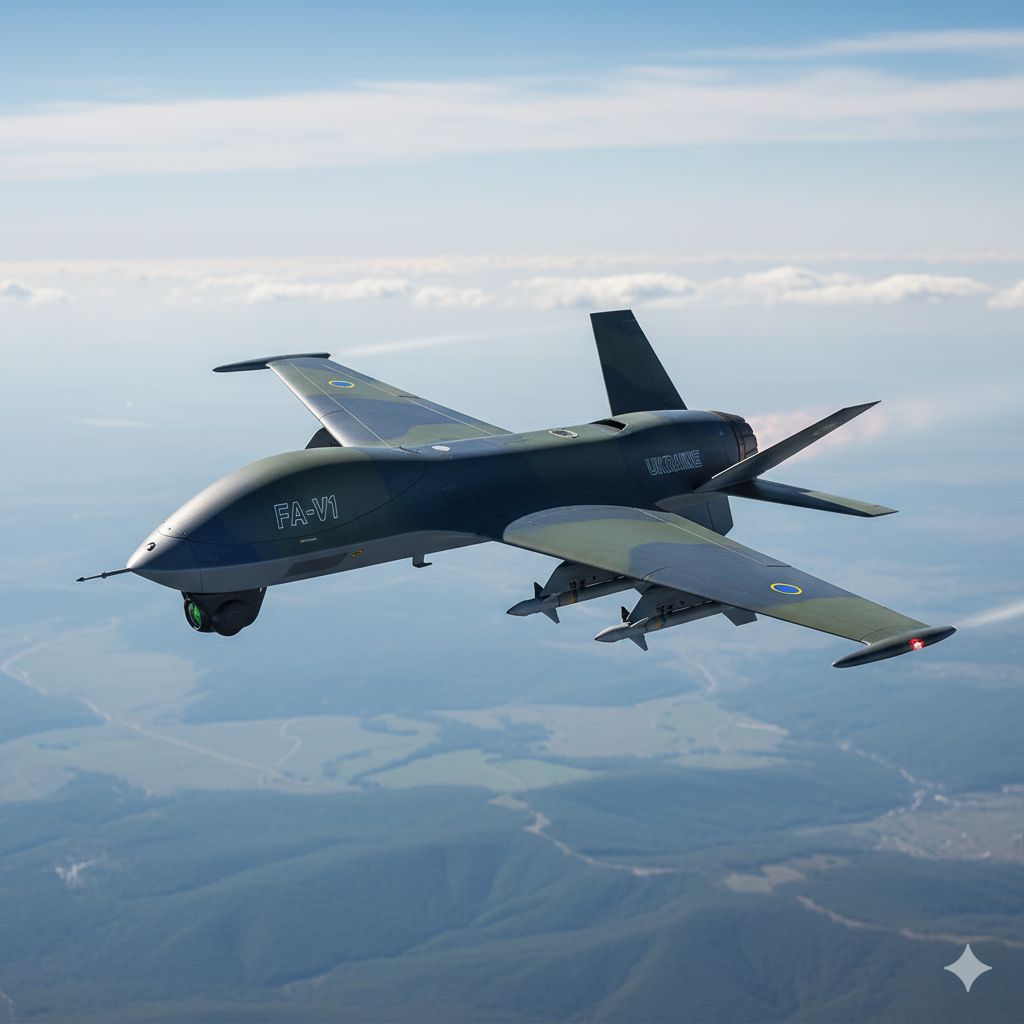In the ever-evolving theater of modern warfare, the ingenuity born out of necessity often leads to groundbreaking advancements. Ukraine, a nation at the forefront of contemporary conflict, has once again demonstrated its remarkable capacity for innovation with the debut of the FA-V1 – a jet-powered, canard-delta drone specifically designed for short-range airspace defense. This is more than just another drone; it represents a significant paradigm shift in how nations can protect their skies from a myriad of threats, especially in contested environments where traditional air defense systems might be overwhelmed or economically unfeasible.
For years, the airspace above battlefields has been a complex and dangerous domain. While sophisticated long-range air defense systems handle high-altitude and distant threats, the “lower tier” – the short-range airspace – has remained a challenging puzzle. This is the realm of tactical drones, attack helicopters, cruise missiles flying at low altitudes, and even slower, manned aircraft that might attempt to evade detection. Protecting this critical layer often relies on a combination of manned aircraft patrols, ground-based missile systems, and anti-aircraft artillery, each with its own limitations in terms of cost, responsiveness, and effectiveness against diverse, agile threats.
The FA-V1 steps into this gap with a revolutionary approach. Its jet-powered propulsion system is a game-changer. Unlike propeller-driven drones, which often have speed and altitude limitations, a jet engine provides the FA-V1 with substantially higher speeds, allowing it to rapidly intercept fast-moving targets. This agility is further enhanced by its canard-delta wing configuration. This aerodynamic design, characterized by small forewings (canards) ahead of the main delta wing, offers exceptional maneuverability and control, crucial for tracking and engaging agile threats in dynamic airspace. Imagine a nimble, unpiloted interceptor, capable of quick turns and rapid acceleration – that’s the promise of the FA-V1.
Ukraine’s focus on “short-range airspace defense” for the FA-V1 is particularly insightful. This suggests that the drone is designed to be a highly responsive, localized protective asset. It could potentially operate as a forward-deployed interceptor, launched quickly to neutralize incoming threats before they can reach critical infrastructure, military assets, or populated areas. This localized defense capability could free up more valuable and longer-range air defense assets for strategic targets, optimizing overall airspace protection.
One of the most compelling aspects of the FA-V1 is its potential for cost-effectiveness compared to manned interceptors. While initial development and production costs exist, the operational expenses of a drone – lacking a pilot, life support systems, and the extensive training required for human aviators – are significantly lower. This makes the deployment of multiple FA-V1s, potentially in a networked “swarm” or coordinated patrol, a more economically viable option for persistent airspace defense. This scalability could allow for a dense defensive curtain, making it incredibly difficult for enemy aircraft or missiles to penetrate.
The emergence of the FA-V1 also speaks volumes about Ukraine’s broader strategy for asymmetric warfare and technological self-reliance. Faced with a larger adversary, Ukraine has consistently sought innovative solutions to level the playing field. Developing indigenous, advanced weapon systems like this drone not only bolsters its defense capabilities but also showcases its burgeoning aerospace engineering prowess. This not only benefits Ukraine but also offers valuable lessons for other nations grappling with similar security challenges.
Looking ahead, the FA-V1’s debut could herald several future developments. We might see further integration with advanced sensor suites, artificial intelligence for autonomous target identification and engagement, and enhanced communication systems for seamless coordination within a larger air defense network. The potential for the FA-V1 to carry different types of payloads – from kinetic interceptors to electronic warfare jammers – would also make it a highly versatile tool in a complex threat environment.
In essence, the FA-V1 is more than just an unmanned aerial vehicle; it’s a statement. It’s a declaration that ingenuity and strategic focus can unlock powerful new defense capabilities, even in the most demanding circumstances. As the skies continue to be a crucial battleground, Ukraine’s FA-V1 jet-powered, canard-delta drone stands as a testament to innovation, setting a new benchmark for short-range airspace defense and charting a course for the future of drone-assisted aerial protection. It will be fascinating to see how this technology evolves and influences the broader landscape of modern air warfare.




